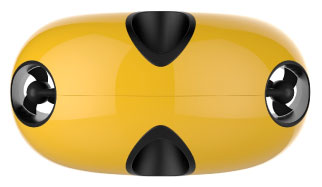The Autonomous Robotics Flying Node System - The Future of Deep Water Ocean Bottom Seismic (OBS)

Autonomous Robotics is developing a Flying Node system which operates as a swarm of autonomous underwater vehicles (AUV’s) for recording OBS data. This technology has the potential to hugely disrupt the offshore seismic market.
OBS surveys record very high quality seismic data especially suitable for field appraisal and development. Unfortunately, the cost of gathering such seismic data at extreme depths in complicated geology remains extremely high. Using the Flying Node system, ARL predicts a tenfold increase in the deployment and recovery rates compared to ROV deployed nodes, which should help to substantially reduce this cost.
The planned system foresees the deployment of 3,500 Flying Nodes from a vessel, which then descend (fly) to a predetermined position on the seabed.
The ARL Flying Nodes are accurately positioned on the seabed using a USBL acoustic navigation system mounted on an unmanned surface vessel (USV) allowing for both 3D (exploration) and 4D (Production/LoFS) seismic. The nodes will have the ability to remain on the seabed recording data for up to 60 days to cover a wide range of survey requirements.
The Autonomous Robotics Flying Node system has been designed using proven technology or a variant thereof wherever possible.
Autonomous Robotics will be presenting a paper on Flying Nodes at the Society for Exploration Geophysics (SEG) conference, New Orleans, on Wed 21 October. Autonomous Robotics will also be unveiling a full scale model of the node and an animation of the system operation at SEG.
Autonomous Robotics Ltd is a wholly owned subsidiary of Thalassa Holdings Ltd (AIM:THAL.L)
By Dave Grant, Autonomous Robotics Ltd (“ARL”)

